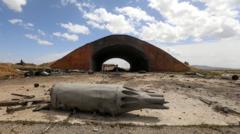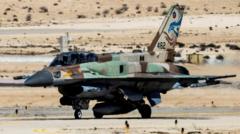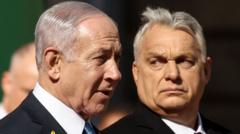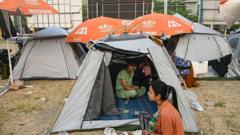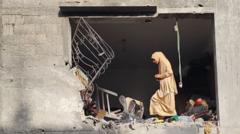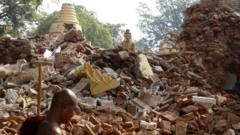The powerful militia and political group, Hezbollah, finds itself at a crossroads, facing significant challenges in the wake of losses from recent conflicts and changing regional dynamics.
**Hezbollah Faces Critical Challenges Following Conflict Strains**
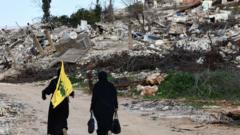
**Hezbollah Faces Critical Challenges Following Conflict Strains**
Hezbollah grapples with internal dissent and external pressures after recent military setbacks.
Hezbollah is at a pivotal moment, facing internal discontent and external pressures following its recent military engagements. The Shia Muslim group, while still a significant political force in Lebanon, has suffered devastating blows to its reputation and capability after recent conflicts, including a bomb attack that has left many of its supporters questioning its future.
One such supporter is Adam, a nurse and member of Hezbollah, who experienced a tragic incident when an Israeli sabotage plan turned one of the group's low-tech pagers into a cause of severe injury. Adam lost parts of his fingers and his vision but remains proud of his identity, dubbing his injuries as "a type of medal from God." This sense of loyalty encapsulates a broader sentiment among many in Hezbollah's base, despite visible discontent and disappointment regarding the group's recent military decisions and their consequences.
Hezbollah, long recognized for balancing its military strength with its political role, is now contending with growing criticism from its supporters. Many believe the party's decision to engage in a violent conflict without consensus was a strategic misstep that could jeopardize its future. Amidst a backdrop of destruction in southern Lebanon, where entire communities suffered losses and fundamental shifts in public sentiment occur, the group's hold on power is being tested. Supporters now voice concerns over the lack of financial and material aid post-war, turning once unyielding loyalty into questions of effectiveness and direction.
Key figures in Hezbollah, including its recently appointed leader Naim Qassem, face the arduous task of navigating this discontent. The once-unquestioned dominance of Hezbollah appears to be eroding, signaling potential shifts within Lebanon's complex political landscape as calls for disarmament grow louder.
Meanwhile, Iran’s backing has been crucial for Hezbollah’s sustenance over the years. However, regional instability, particularly with the Assad regime's uncertain status in Syria, has hampered the supply routes that once provided the group with significant support. As external influences increase pressure for Hezbollah’s disarmament, the group might find itself squeezed economically and militarily.
While Hezbollah’s historical roots are entrenched in resistance to Israeli actions, growing sentiments within its support base may compel leaders to rethink strategies to maintain their influence and adapt to the broader regional changes. The path forward remains uncertain as the sectarian and political complexities of Lebanon become a battleground for various agendas, with Hezbollah at the core of this dynamic transformation. The future of Hezbollah may well hinge on its ability to reassure and rally its constituents without alienating them further—a challenge that requires significant recalibration in light of its recent failures.
One such supporter is Adam, a nurse and member of Hezbollah, who experienced a tragic incident when an Israeli sabotage plan turned one of the group's low-tech pagers into a cause of severe injury. Adam lost parts of his fingers and his vision but remains proud of his identity, dubbing his injuries as "a type of medal from God." This sense of loyalty encapsulates a broader sentiment among many in Hezbollah's base, despite visible discontent and disappointment regarding the group's recent military decisions and their consequences.
Hezbollah, long recognized for balancing its military strength with its political role, is now contending with growing criticism from its supporters. Many believe the party's decision to engage in a violent conflict without consensus was a strategic misstep that could jeopardize its future. Amidst a backdrop of destruction in southern Lebanon, where entire communities suffered losses and fundamental shifts in public sentiment occur, the group's hold on power is being tested. Supporters now voice concerns over the lack of financial and material aid post-war, turning once unyielding loyalty into questions of effectiveness and direction.
Key figures in Hezbollah, including its recently appointed leader Naim Qassem, face the arduous task of navigating this discontent. The once-unquestioned dominance of Hezbollah appears to be eroding, signaling potential shifts within Lebanon's complex political landscape as calls for disarmament grow louder.
Meanwhile, Iran’s backing has been crucial for Hezbollah’s sustenance over the years. However, regional instability, particularly with the Assad regime's uncertain status in Syria, has hampered the supply routes that once provided the group with significant support. As external influences increase pressure for Hezbollah’s disarmament, the group might find itself squeezed economically and militarily.
While Hezbollah’s historical roots are entrenched in resistance to Israeli actions, growing sentiments within its support base may compel leaders to rethink strategies to maintain their influence and adapt to the broader regional changes. The path forward remains uncertain as the sectarian and political complexities of Lebanon become a battleground for various agendas, with Hezbollah at the core of this dynamic transformation. The future of Hezbollah may well hinge on its ability to reassure and rally its constituents without alienating them further—a challenge that requires significant recalibration in light of its recent failures.

